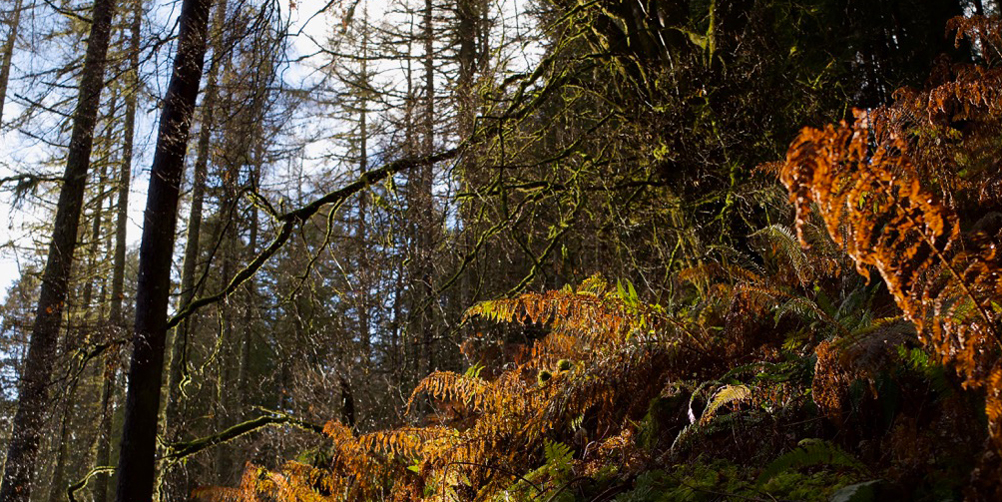
Midwinter wishes
What a year it has been. I’m not going to go on about it, except to say that I do hope that you and your loved ones haven’t been too adversely affected. It’s easy to scare yourself into thinking the entire world has gone mad, but the real world – the natural world, with all its vibrant and diverse life forms and the reassuring turn of the seasons – is still going on around us, offering an alternative, positive focus that is both constant and uplifting. The days might be dark but the winter solstice is behind us – in the northern hemisphere at least – and we can now look forward to the return of the light.
This year, I’ve read some fabulous books, and I’ve also been lucky enough to speak to some extraordinary people through my role with the Royal Scottish Geographical Society. These people are wise and insightful, and I have learned so much, either from chatting to them or from reading their words. I’ve picked a few examples of books and interviews to share with you, and I hope you’ll be inspired to find out more.
Meanwhile, I would like to thank you for your company during 2020. Whatever you may or may not be doing over Christmas, I send you the very warmest wishes, and my heartfelt hopes for better times to come in the New Year.
Horatio Clare
‘The Light in the Dark – A Winter Journal’ (Elliott & Thompson, 2018)
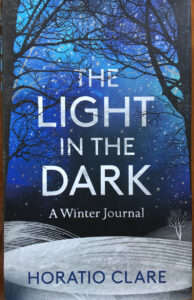 I bought ‘The Light in the Dark’ to read last winter, and now I’m enjoying it again. Everything about it is beautiful – the cover, the writing, the author’s intention. It is a winter journal, and it was written, quite simply, as a kind of torch to be held up against the season’s darkness, with all the negative emotions of gloom, depression and futility that it can bring. What I admire most about Horatio Clare is his honesty: it takes courage to lay all your vulnerabilities bare and expose them to thousands of strangers. Yet we are not really strangers, because I’m sure we have all felt these emotions too.
I bought ‘The Light in the Dark’ to read last winter, and now I’m enjoying it again. Everything about it is beautiful – the cover, the writing, the author’s intention. It is a winter journal, and it was written, quite simply, as a kind of torch to be held up against the season’s darkness, with all the negative emotions of gloom, depression and futility that it can bring. What I admire most about Horatio Clare is his honesty: it takes courage to lay all your vulnerabilities bare and expose them to thousands of strangers. Yet we are not really strangers, because I’m sure we have all felt these emotions too.
At midnight on 5th September, which is his birthday, he makes a vow to himself for the coming season:
“Beware that glaze which creeps over the inner eye, blinding you to the brightness of moss in rain. I will not lose touch with nature. This is vital. I believe in immanence, in the oneness of living things. Maintaining that faith will carry you through the hardest times. Or such is the hope, this midnight. I start my birthday with many wishes, and this is one.”
Clare’s prose is gorgeous, breathtaking, instantly re-readable just for the pleasure of it. He writes like an artist, with fluidity and vivid flashes of colour, combined with wit, irony, intelligence and sensitivity. I find it moving that he is troubled by self-doubt, when his talent is self-evident. Yet I can totally empathise with it too. I hope that writing ‘The Light in the Dark’ was a profoundly helpful experience for him, because I know for sure that it will bring pleasure and brightness to his readers for many, many winters to come.
More about Horatio Clare at https://horatioclarewriter.com/
Gavin Pretor-Pinney
‘A Cloud a Day – 365 Skies from the Cloud Appreciation Society’ (Batsford, 2019)
If we looked at the sky as if we were seeing it for the first time, what would we see? What would we feel? In April I chatted to Gavin Pretor-Pinney, the founder of the Cloud Appreciation Society. At a time when the world was pretty much transfixed by the news, he suggested sky-gazing as a simple but perfect way of restoring our inner calm. He helped me to see the sky in a completely different way:
“We think of ourselves as creatures of the ground, but we also live in the air. The atmosphere can be seen as an ocean of air, and although it’s made of gases rather than liquid it behaves in a similar way.”
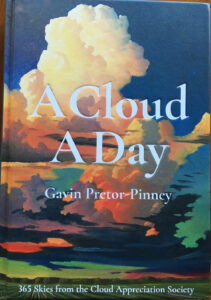 Gavin explained that we often take the sky for granted, glancing at it almost without seeing. He invites us to look at it as if we’re seeing it for the first time, because we will find never-ending interest and wonder in the changing clouds and colours. There are other benefits, too. When we look up, our thoughts take a different direction, and our mind responds by slowing down. The result may be a few valuable moments of peace, which can be so good for our mental and physical wellbeing.
Gavin explained that we often take the sky for granted, glancing at it almost without seeing. He invites us to look at it as if we’re seeing it for the first time, because we will find never-ending interest and wonder in the changing clouds and colours. There are other benefits, too. When we look up, our thoughts take a different direction, and our mind responds by slowing down. The result may be a few valuable moments of peace, which can be so good for our mental and physical wellbeing.
This wisdom resonated with me so deeply. After all, who hasn’t watched clouds for hours as a child, totally absorbed and content, without that secret tug of guilt that you get for ‘wasting time’ when you grow up? If we take the time, we can allow ourselves to re-discover this childlike sense of wonder. Daydreaming it might be, but when did that become a bad thing? We might be tempted to start identifying cloud types, but that’s not essential. It’s more about simple appreciation, of finding pleasure in the beauty of the sky.
“The Cloud Appreciation Society… is like a gentle tap on the shoulder, to remind you to engage with this ever-present part of nature. It helps us to realise that it’s good for us as individuals, good for us as a community, and even a world community; it’s good for our relationship with the atmosphere, and it’s good for our souls.”
You can read my full interview with Gavin in RSGS’ newsletter ‘The Geographer’ (Armchair Edition, pages 28-29)
Gavin’s other books include ‘The Cloudspotter’s Guide’ (Hodder & Stoughton, 2006)
More about the Cloud Appreciation Society
Lara Maiklem
‘Mudlarking’ (Bloomsbury, 2019)
“It is the tides that make mudlarking in London so unique. For just a few hours each day, the river gives us access to its contents, which shift and change as the water ebbs and flows, to reveal the story of a city, its people and their relationship with a natural force.”
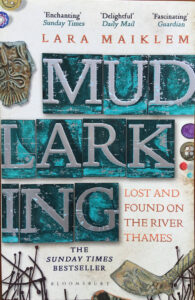 For nearly 20 years, Lara Maiklem has been scouring the banks of the River Thames for all kinds of artefacts: Neolithic flints, Roman hairpins, Tudor buttons, Georgian clay pipes. Yielded by the mud that is exposed at low tide, they are the relics of nameless people – the ordinary inhabitants of a city, whose stories are rarely told in the history books. In ‘Mudlarking’, she invites us into her world, treading gingerly down old flights of steps that descend from the bustle of a modern city into the curiously quiet and timeless realm of the foreshore.
For nearly 20 years, Lara Maiklem has been scouring the banks of the River Thames for all kinds of artefacts: Neolithic flints, Roman hairpins, Tudor buttons, Georgian clay pipes. Yielded by the mud that is exposed at low tide, they are the relics of nameless people – the ordinary inhabitants of a city, whose stories are rarely told in the history books. In ‘Mudlarking’, she invites us into her world, treading gingerly down old flights of steps that descend from the bustle of a modern city into the curiously quiet and timeless realm of the foreshore.
I love how Lara seems to have developed an instinct, a sixth sense, for something unusual; and, having pulled a new treasure from the gloop, she can often find an intuitive understanding that allows her to speculate in convincing detail about its original owner. She is well-read and well-researched – for her, mudlarking isn’t just a hobby, it’s a passion, and her finds are prized for personal reasons, rather than their monetary value.
I found ‘Mudlarking’ immensely enjoyable for its wealth of historical detail and astonishing human stories, beautifully told. The news is often full of the latest spectacular archaeological find, but Lara’s book proves that so much can be gleaned from lesser treasures, given the enthusiasm and the knowledge.
Follow Lara Maiklem on Twitter @LondonMudlark and Instagram @london.mudlark
Philip Marsden
‘The Summer Isles’ (Granta, 2019)
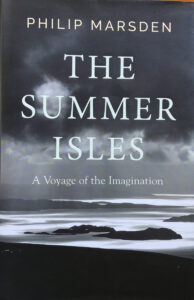 A few years ago, when Philip Marsden decided to embark on a voyage up the western seaboard of Ireland and Scotland, he found a ready supply of pessimists among experienced sailors. A solo yachtsman, he was told, would be far safer going up through the Irish Sea: he’d arrive at his destination more quickly, and he’d get there in one piece. But such advice was entirely missing the point. The physical challenge, although daunting, was the framework for a less tangible quest, fuelled by a love of landscape, people, history and legend.
A few years ago, when Philip Marsden decided to embark on a voyage up the western seaboard of Ireland and Scotland, he found a ready supply of pessimists among experienced sailors. A solo yachtsman, he was told, would be far safer going up through the Irish Sea: he’d arrive at his destination more quickly, and he’d get there in one piece. But such advice was entirely missing the point. The physical challenge, although daunting, was the framework for a less tangible quest, fuelled by a love of landscape, people, history and legend.
Philip describes his journey in ‘The Summer Isles – A Voyage of the Imagination’. When I read it, I was struck with the idea of there being an extra layer to the topography of a country or a coastline: an invisible layer of stories and traditions, woven and perpetuated by the people who have lived there. For me, this resonates so deeply with the landscape here in western Scotland.
Other factors fed into Philip’s idea – a love of sailing, a desire to venture further afield, and an interest in the survival of Gaelic and Celtic traditions on the western fringes of the British Isles. He delved into medieval Irish literature, in which heroes undertake echtrai – journeys to the otherworld – and immrama, literally ‘rowings about’, which developed into sea-quests for mythical islands. He notes that, long before Ireland’s interior was mapped, its sites were described in dinnseanchas, loosely translated as ‘the lore of high places.’ As part of their bardic training, poets would visit landmarks and recite by heart all the stories that were present there.
For Philip, the practical tribulations of sailing provided a counterpoint to philosophical musings. Problems with equipment demanded immediate attention, and calm weather could quickly turn wild. He navigated chaotic waters caused by tidal races colliding over submerged reefs, and clung grimly to the helm in mountainous seas. In the more serene moments he had the illusion of sailing not so much in water but through the air, an experience alluded to in early chronicles where ships were witnessed in the sky: “On a clear day with bright sunshine, the horizon disappears and the sea and the sky seem to fuse… In several early Irish stories are instances of ships being seen sailing through the sky.”
I can’t recommend ‘The Summer Isles’ highly enough. It must be one of my all-time favourite books.
More about Philip Marsden: https://granta.com/contributor/philip-marsden/
Chris Packham
‘Fingers in the Sparkle Jar’ (Ebury Press, 2016)
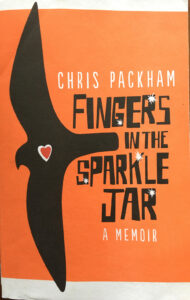 Chris Packham is a familiar face on our TV screens, as a presenter of wildlife shows and documentaries. What I didn’t realise until fairly recently was what a remarkable writer he was. ‘Fingers in the Sparkle Jar’ is a memoir which draws on his early experiences as a boy whose acute sensation of being in some way ‘different’ was fused with an obsession with wild creatures of all kinds.
Chris Packham is a familiar face on our TV screens, as a presenter of wildlife shows and documentaries. What I didn’t realise until fairly recently was what a remarkable writer he was. ‘Fingers in the Sparkle Jar’ is a memoir which draws on his early experiences as a boy whose acute sensation of being in some way ‘different’ was fused with an obsession with wild creatures of all kinds.
Chris recounts his memories with a searing truthfulness that almost – but not quite – becomes a kind of detachment. There’s no emotional filter to blur the edges, just a throwing wide of the window so that we can breathe the same air. His interactions with animals and humans are described with the kind of intensity and candour that you rarely meet with in writing. He experienced nature with all his senses and immersed himself totally in the natural world, which offered an escape from the excruciating atmosphere of classrooms, playgrounds and sitting rooms. In particular, his relationship with his beloved kestrel breaks your heart. You can sense the ending, and I think maybe Chris could, too. But it didn’t help. He says: “I loved him so much I wanted to be him.”
Seeing the world through Chris’s eyes, interpreting it through his interrogating mind, feeling it through his brave and deeply vulnerable heart, was a revelatory experience that seemed to enhance my own powers of perception. It also gave me a profound admiration for his courage. Scattered throughout the book are fragments of conversations that Chris had as a young adult with a mental health therapist; in later life he has spoken openly about his diagnosis with Asperger’s and his quest to learn more about it. In this, as with all the other issues that he explores, he is unflinchingly open and honest.
I was lucky enough to interview Chris when he came to give a talk to RSGS in December 2019. I enjoyed chatting to him very much. He is one of those people whose presence you remember, as well as his words. Observant, interested and interesting, formidably well-informed, witty and humble – yet fierce, and unapologetically so, about matters that concern him. He told me: “There will never be room for any complacency and contentment in my life as a conservationist and an environmentalist… the fact that we will not give up is what provides that hope.”
You can read the full interview with Chris in ‘The Geographer’ Spring 2020 edition (pages 18-19)
Chris Packham’s website: https://www.chrispackham.co.uk/

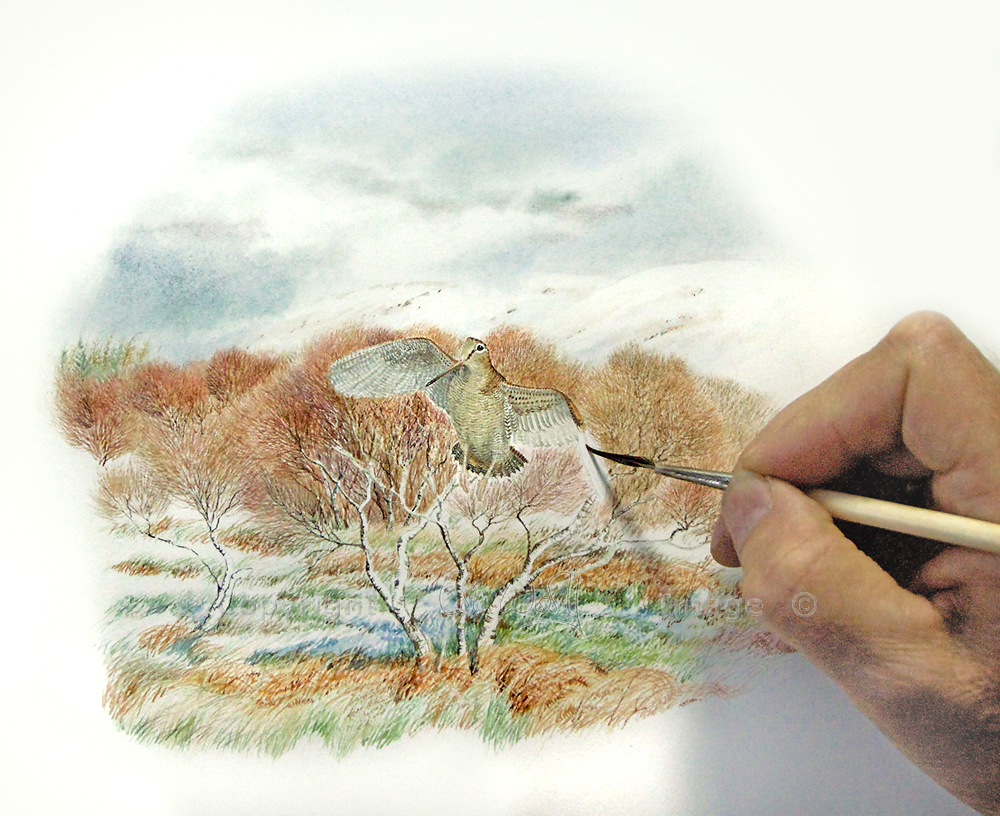
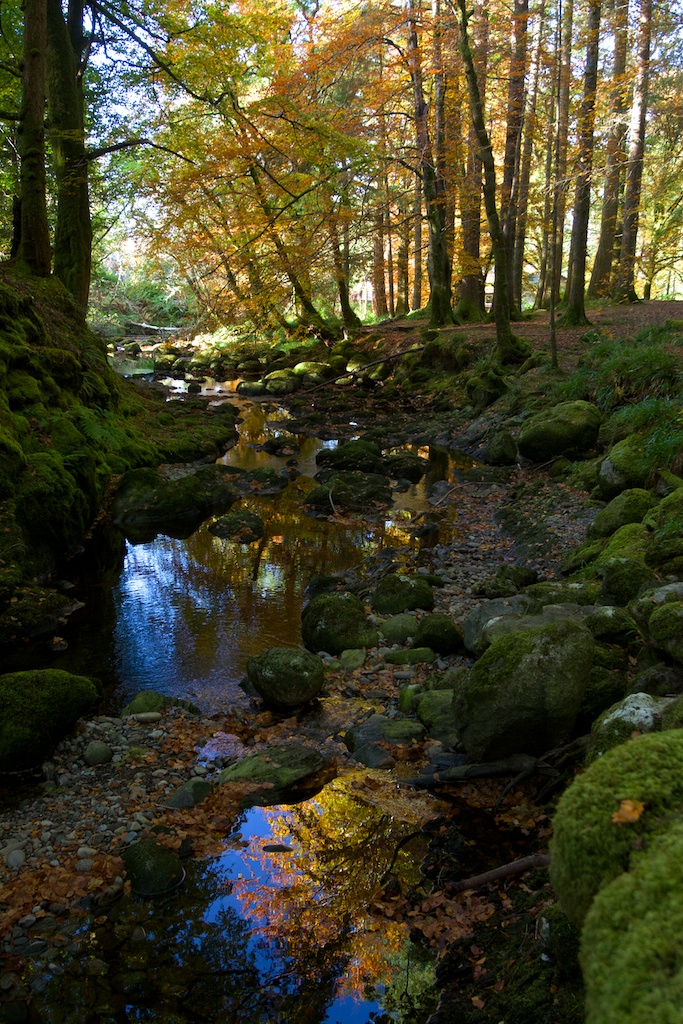
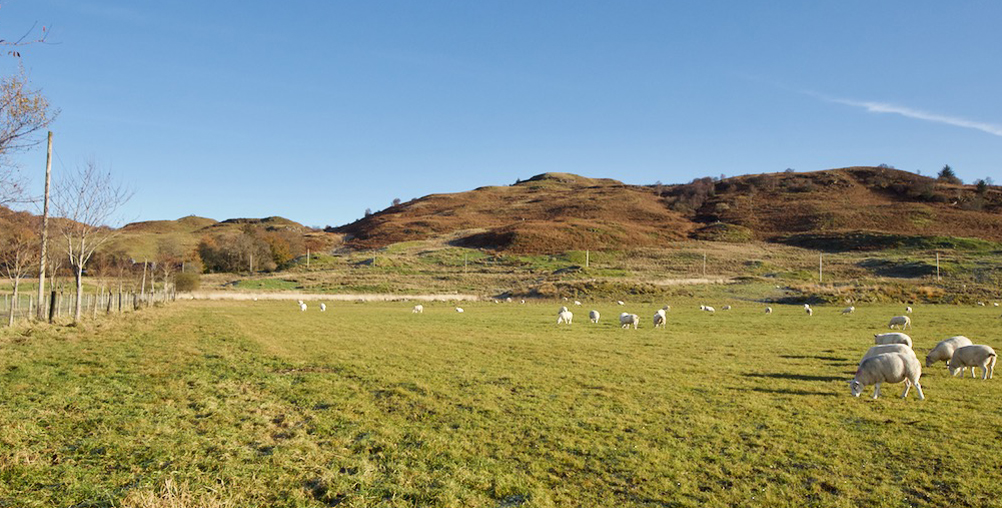
22 Comments
Ashley
Dear Jo, warm wishes to you for this mid winter and the new year just around the corner. What would we do without nature and of course good books to read. I will have to read the Horatio Clare book, and no. I still haven’t got round to the Philip Marsden book! Best wishes to you ???
Jo Woolf
Thank you, Ashley! Yes, very true. I’m looking forward to more good reading over Christmas and New Year!
Susan Abernethy
Dear Jo, Wishing you and your family all the best for the holidays. Susan
Jo Woolf
Thank you Susan, and the same to you!
Kevin Gore
Thanks for the warm wishes Jo, that are of course returned from down here in St Ippolyts, Herts. It’s been since may 2019 when I last walked among the Munro’s and Glens, hopefully I’ll get to return during the coming year.? Regards Kev.
Jo Woolf
Thank you Kevin! I really hope you can come and enjoy the Highlands next year!
Marie Macpherson
thanks for that lovely post, Jo and for the book rewcommendations. They all sound fascinating especially A Cloud A day. Matt loved cloud-watching and was an early member of the Cloud Appreciation Society – he had a certificate to prove it! I should buy that book for myself! Thanks for your uplifting posts – they are all lights in the darkness. all the best to you and yours. Marie x
Jo Woolf
Matt sounds like an incredible person, Marie! So forward-thinking and positive. You’re most welcome, and thank you for your kind wishes. The very warmest wishes back to you with love and hope for a more positive year to come. xx
davidoakesimages
Thank you for the reading list ? and let’s all try hard to make 2021 a little more, let’s say, normal. As for the natural world, well that seems to have managed better without as much human intervention. Peace and good health
Jo Woolf
A very good plan, David! The natural world has flourished here over the last year – it has been a privilege to see it. Wishing you the very best of peace and health in the year to come.
Moira Goodman
I do enjoy reading about your adventures throughout the year Jo even moreso this year of the pandemic. The skies have never looked so clear and the sunsets have been truly spectacular. This world of ours is an amazing place to be in and nature itself never lets us down. Wishing you and your family every Best Wish for 2021!!
Jo Woolf
Thank you Moira, and I’ve plenty more adventures planned! Yes, the natural world is so precious and so infinitely beautiful. Our very best wishes to you all too, for the coming year. xx
Bob Hay.
Hi Jo. Loved the colours on that cloud book cover. Reminded me of all the great posters you used to see in railway carriages advertising places to see in Britain. I believe the colour style has a name but can’t think of it.
Jo Woolf
Yes, that’s a good point, Bob! It is very similar. I love the colours – I think that’s part of the appeal of those old posters, which evoke all the remembered pleasures of rural England in summer – a bit like ‘Adlestrop’ in pictures, I guess! One of my favourite images in that kind of style dates from even earlier – a poster by Bartholomews of Edinburgh, of an early motor car in a glorious Highland landscape, with the reassuring slogan “Bartholomews will keep you right.” And they did, of course – their maps were legendary! https://www.nls.uk/collections/maps/collections/special-collections
Bob Hay.
You’re right Jo. Must have been a world wide style.
https://www.google.com/search?rls=en&source=univ&tbm=isch&q=EARLY+RAILWAY+TRAVEL+POSTERS&client=safari&sa=X&ved=2ahUKEwi2jIuE6_HtAhXxzjgGHVxPDUwQjJkEegQIAxAB&biw=1028&bih=660
Jo Woolf
Looks like the original ones are very collectable!
Sel Calderbank
Hello, I just came across your site while doing some personal research on hazel trees! An accidental but welcome detour! Thanks for this interesting selection of books, they are quite intriguing. I love the idea of there being a cloud appreciation society. During these cloudy January days, that could help!
Jo Woolf
Hi Sel, interested to hear about your research on hazel trees! Let me know if I can be of any help. Yes, speaking to Gavin Pretor-Pinney of the Cloud Appreciation Society was eye-opening – it made me look at clouds in a totally different way!
Sel Calderbank
Thanks Jo – I have two hazels in my garden and want to feature them on my gardening blog, as the catkins are looking lovely now. Interested in their associations with magic and wisdom, and as I now live in Belgium, I’m curious to find out if those ideas also exist in the local folklore.
Jo Woolf
That’s a good idea! Most of the works on folklore I’ve come across focus on Britain and Ireland but you could try these: ‘Plant Lore, Legends and Lyrics’ by Richard Folkard (1884) https://archive.org/details/plantlorelegends00folk/page/n7 and ‘Myths and Legends of Flowers, Trees, Fruits and Plants’ by Charles M Skinner (1911) https://archive.org/details/mythslegendsoffl00skin/page/n7 Also this one is worth a try: ‘The folk-lore of plants’, T F Thiselton-Dyer, 1889 https://archive.org/details/folkloreplants00thisgoog/page/n7
I don’t know if any mention Belgium specifically in relation to hazels but they do seem to include stories and traditions from the continent.
Sel Calderbank
Thanks so much for those recommendations, I am going to enjoy looking into these. As Belgium only became a country in 1830, I think it will be the French and Dutch traditions – Belgium draws from both – that get mentioned. I already found one reference to a French belief that on Christmas when the clock strikes midnight, hazel sticks can turn to gold – but whoever wants to get hold of this gold must remove the sticks by the time the twelfth chime has sounded, otherwise they along with the sticks will disappear forever. A kind of warning against avarice!
Jo Woolf
That’s a wonderful story! Yes, sounds like there’s a moral in that one, haha! Hope you have fun with your research!